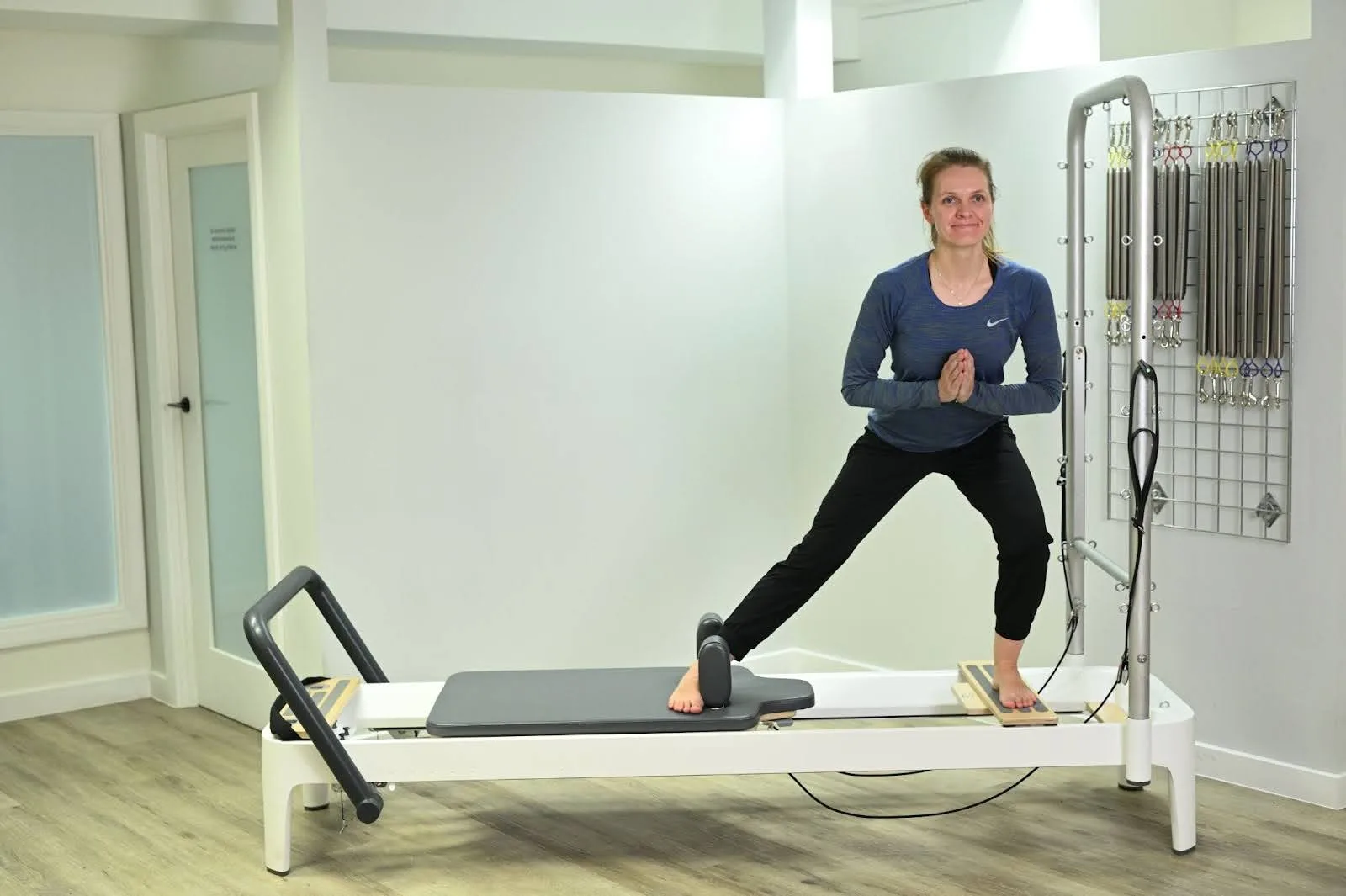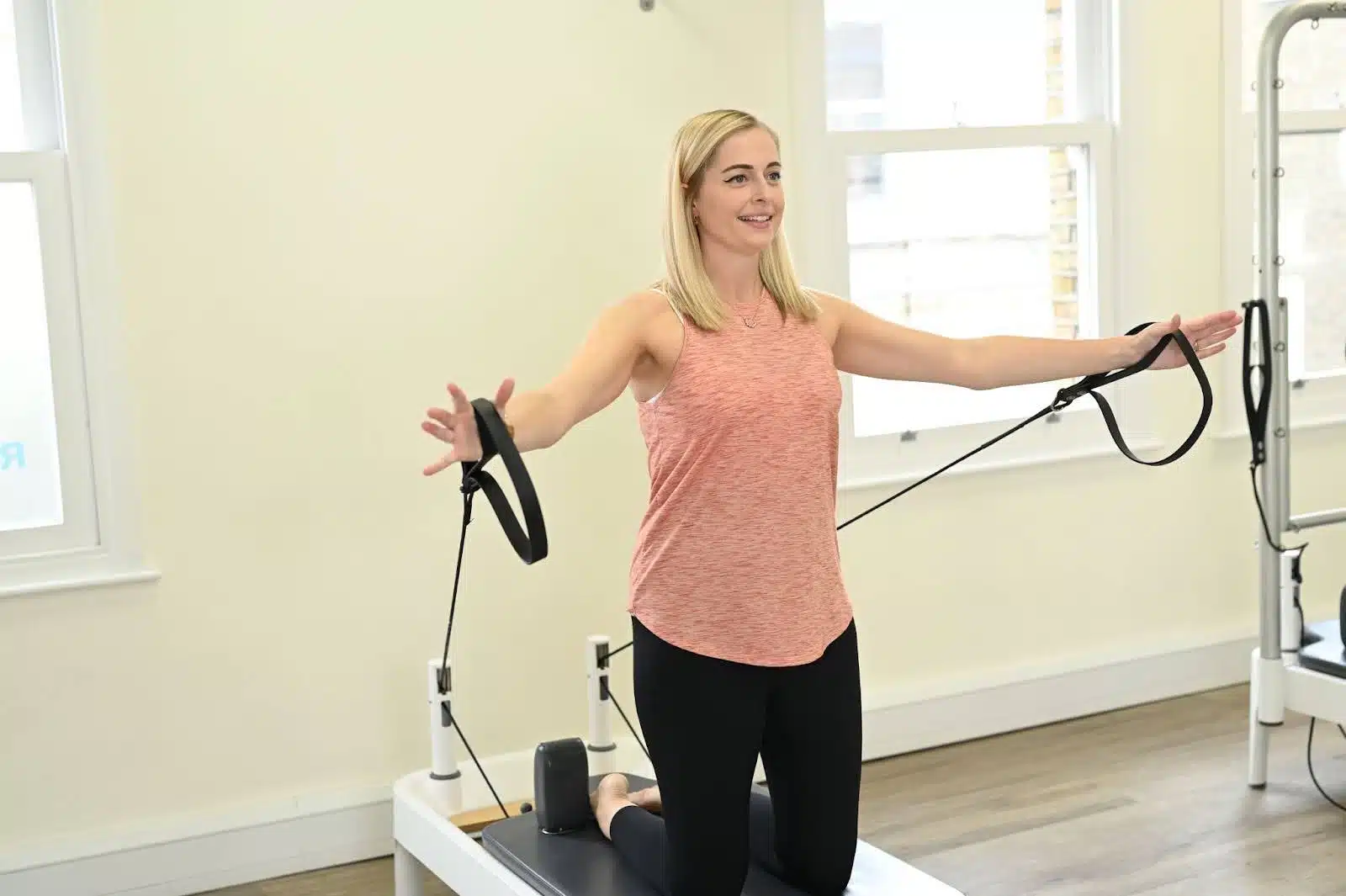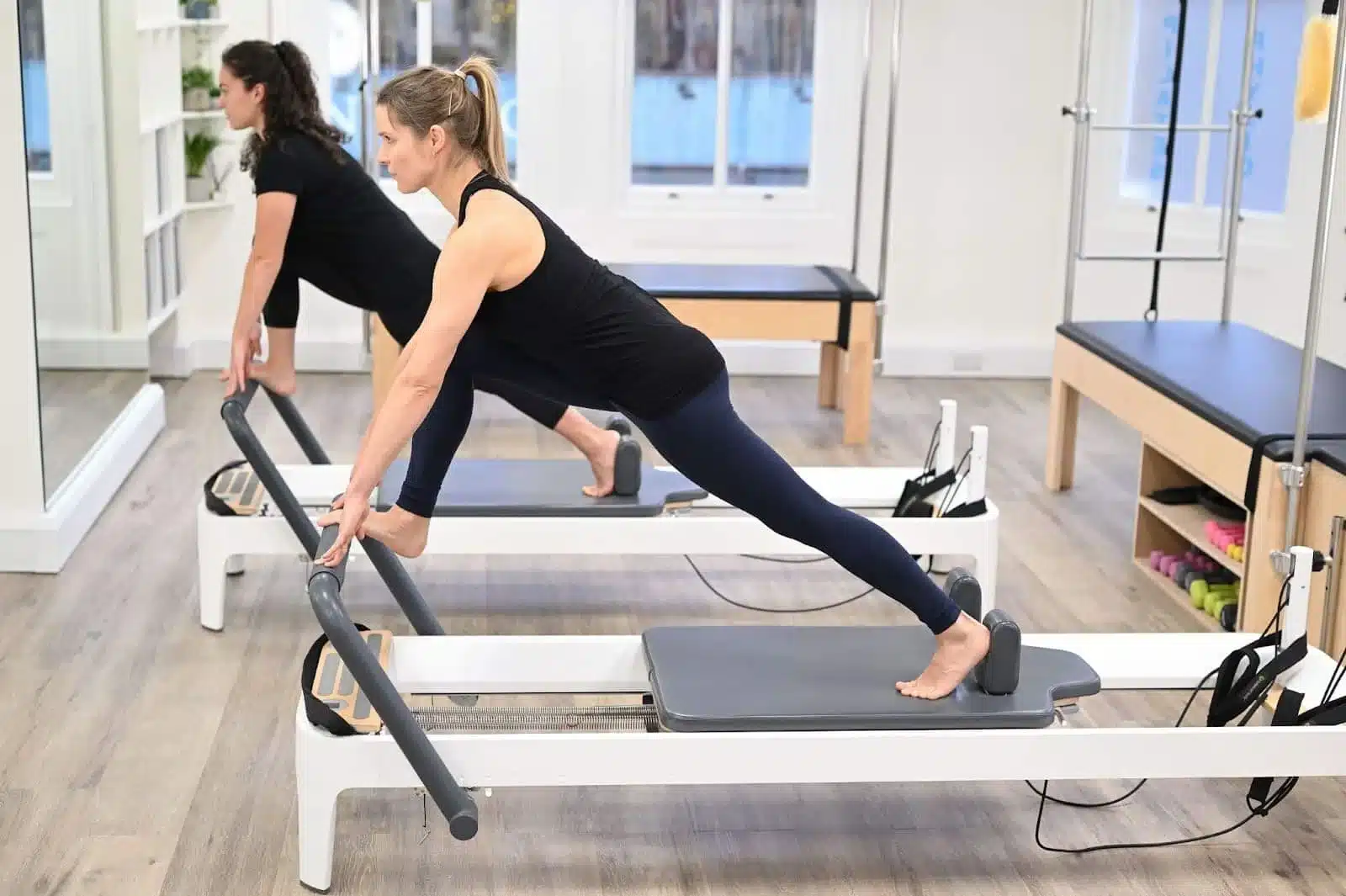Key Contributor: Susie Martin, Chartered Physiotherapist
Introduction
If you’ve ever watched a Reformer Pilates class, you might be fooled by the slow, graceful movements. It looks gentle — almost easy. But looks can be deceiving! Is Reformer Pilates hard? The short answer: yes, it can be surprisingly tough, but that’s precisely why it’s so effective.
The Reformer machine, with its springs, pulleys, and sliding carriage, introduces resistance and instability, challenging your muscles in ways you might not expect. In fact, the controlled pace and intense focus on form mean you’ll often leave a session feeling muscles you didn’t know you had.
Takeaway: Reformer Pilates can be hard — but in the best possible way. It builds strength, improves control, and demands a mind-body connection that pays off in full-body benefits.
Three key takeaway points
- Controlled Resistance Builds Deep Strength: The springs on the Reformer add resistance that challenges muscles through their full range of motion, during both the shortening and lengthening phase of a muscle contraction.
- Core Activation is Constant: Reformer Pilates requires continual engagement of your deep core muscles, which builds stability, control, and resilience.
- Precision Over Speed: Unlike fast-paced workouts, Reformer Pilates demands slow, exact movements — making it mentally and physically challenging for even the fittest individuals.
What makes reformer Pilates hard?
Whether an exercise is ‘hard’ or not depends on your definition of hard! When most people think of hard exercise, they think of exercise that gets you hot and sweaty and gets your heart rate pumping.
However, there are other ways for exercises to be hard, that might not be obvious at first.
Working against resistance can feel hard, but doesn’t necessarily get your heart rate up that much, or may not get you sweaty. That doesn’t mean that it isn’t doing you good!
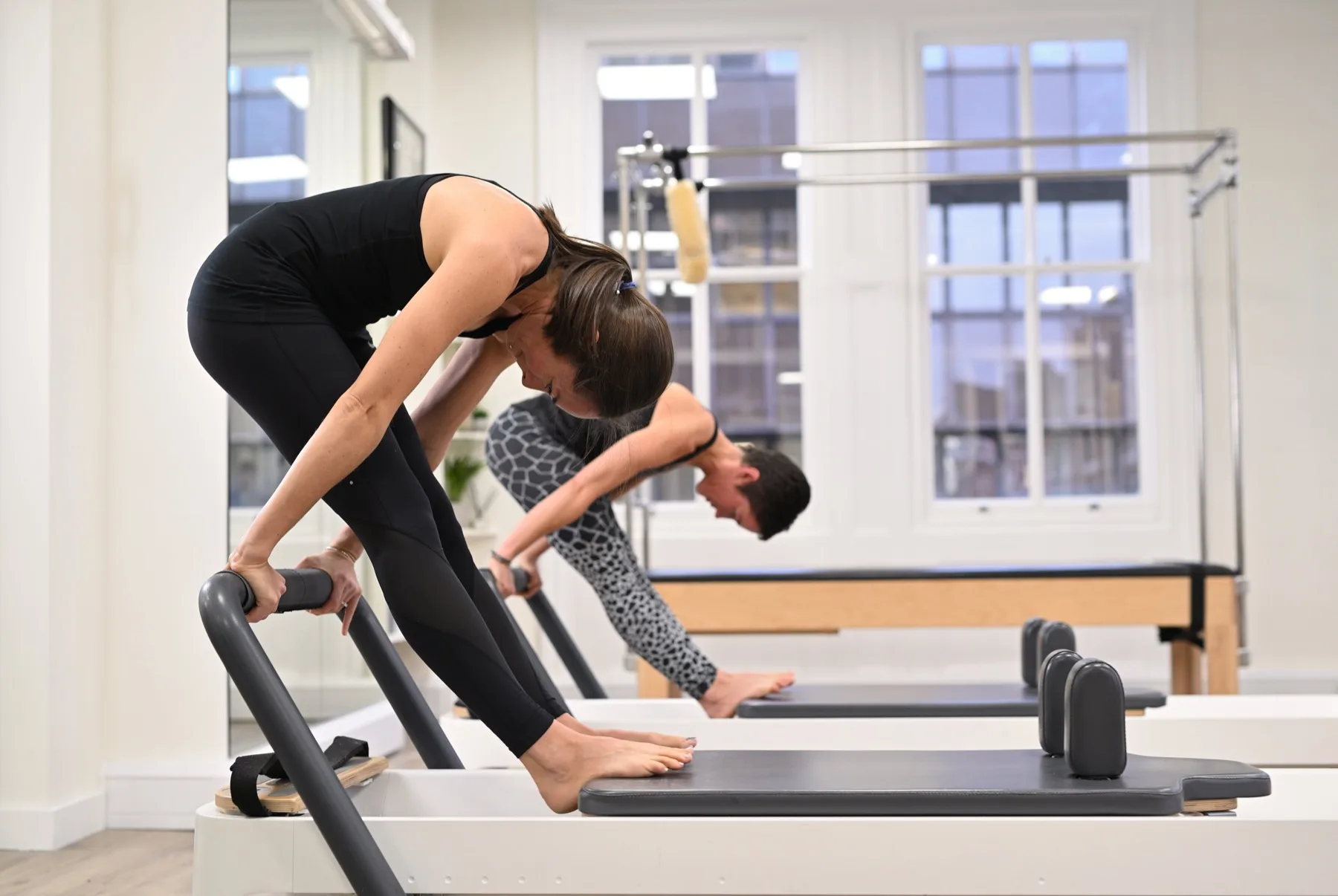
Performing exercises slowly, or sustained holds can make an exercise feel hard. Complex movements that require lots of co-ordination or lots of mental effort, can feel hard. Exercises that challenge your balance can also feel hard!
Reformer Pilates repertoire has all of these elements, which is why people often feel that it is hard work!
So what else makes reformer Pilates hard?
- Resistance from springs – the reformer machine uses springs to create resistance. Some exercises can be made more challenging by increasing the resistance of the springs.
- Core control – much of the exercise on a reformer requires constant activity of the deep abdominal and spinal muscles which help provide stability to the spine and also help you transfer load effectively throughout the body.
- Precision and form – Pilates can be a very technical form of exercise. Precise, controlled movements, focussing on good form are really important. Without this precision, you can ‘cheat’ on an exercise. Your body will always move in the easiest way possible but that often means that we are not getting the most benefit from the exercise. A small tweak can make something seemingly easy, suddenly become super challenging!
- Full body co-ordination – reformer exercises range from simple movements to complex ones where you are working multiple body parts and working against the equipment at the same time. This makes it challenging for both body and mind!
Who may find reformer Pilates difficult?
Whether or not you find reformer Pilates difficult depends on several different factors.
If you are new to reformer Pilates and you go straight into a fast paced reformer class, you may find it difficult to keep up with the movements, or overwhelmed by the different parts of the equipment.
However, if you choose a class specifically designed for beginners, or better still, you have some one-to-one sessions then you can familiarise yourself with the exercises and the equipment. This will help you to get more from group reformer Pilates classes.
If you are deconditioned or don’t have a great deal of strength then you are likely to find reformer Pilates challenging. This could be a good thing, as you will benefit from regular sessions to improve your strength.
However, you also want to make sure that the Pilates is at the right level for you. Too easy, and you won’t get stronger, too hard, and you will likely not enjoy working out, or may even suffer an injury.
If you have an injury or are recovering from an injury, you also may find that a group reformer class is not suitable for you.
Firstly, it is important that you don’t injure yourself further, so you need to be sure that you can do the movements without increasing stress on the injured area.
Secondly, you want to make sure that the exercise is benefitting you in terms of recovery and rehabilitation. Exercises need to be selected, paced and progressed according to your stage of recovery and this is best done by a qualified rehabilitation professional or health care professional such as a physiotherapist.
However, it is not only novices and people returning to exercise who may find reformer Pilates challenging – many fit and athletic people find reformer Pilates hard too! This is because it requires a different type of movement than they are used to when participating in other types of exercise.
Many athletes who are strong and powerful, struggle with the stability aspect of reformer Pilates. For example, the dynamic nature of plank type exercises on a reformer is highly challenging.
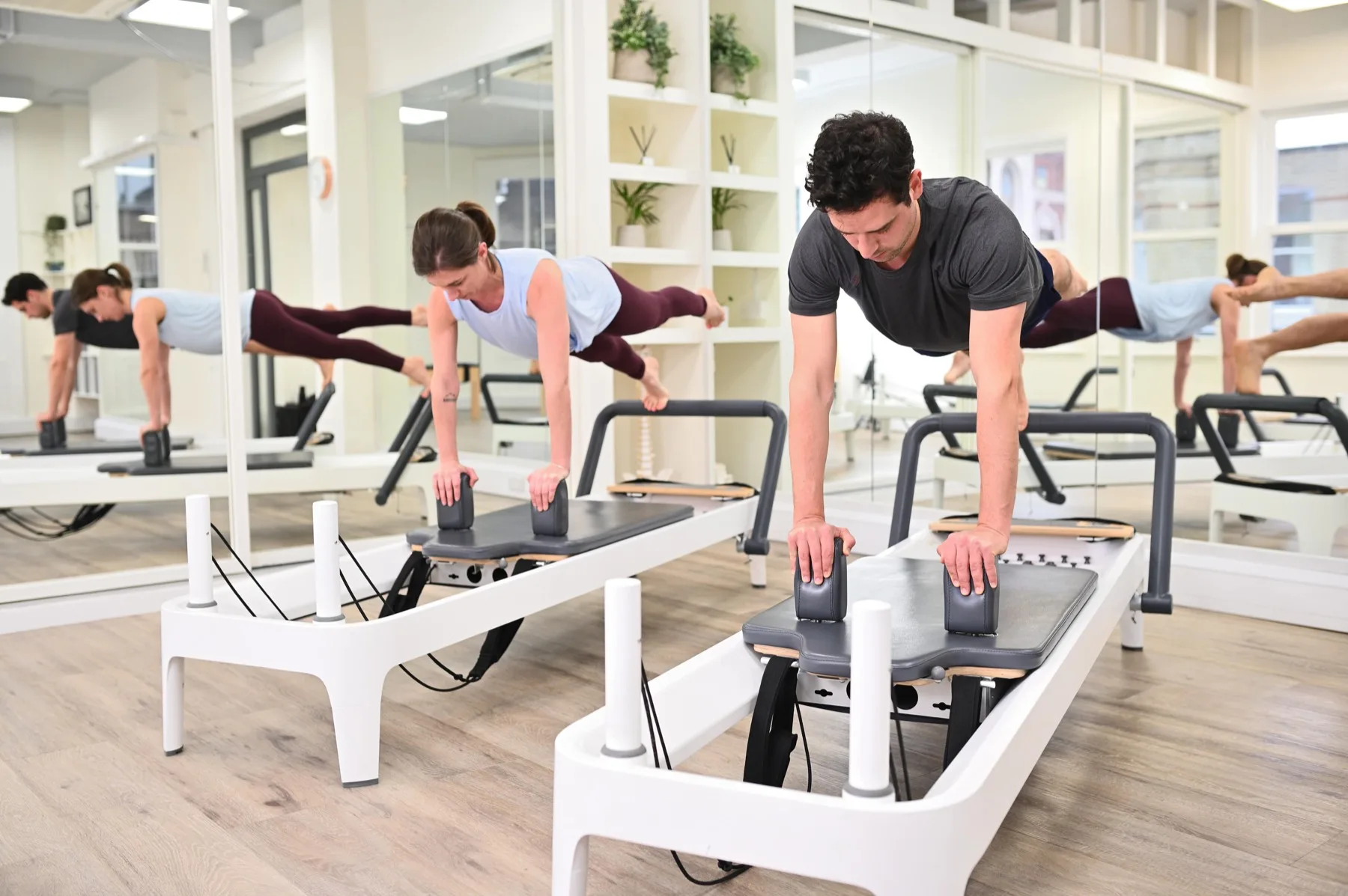
Athletic people also may find the co-ordination of certain exercises challenging, the scooter exercise on the reformer also requires balance and coordination at the same time. The Russian split on the reformer requires exceptional flexibility as well as strength and balance, all at the same time!
The additional as well as the additional resistance that the straps can add to abdominal exercises can be very challenging too.
Can reformer Pilates be made easier?
Although reformer Pilates can be very dynamic and challenging, that doesn’t mean that it is out of reach for most people. The reformer is such a versatile piece of equipment, that it can be adapted for use by practically anyone.
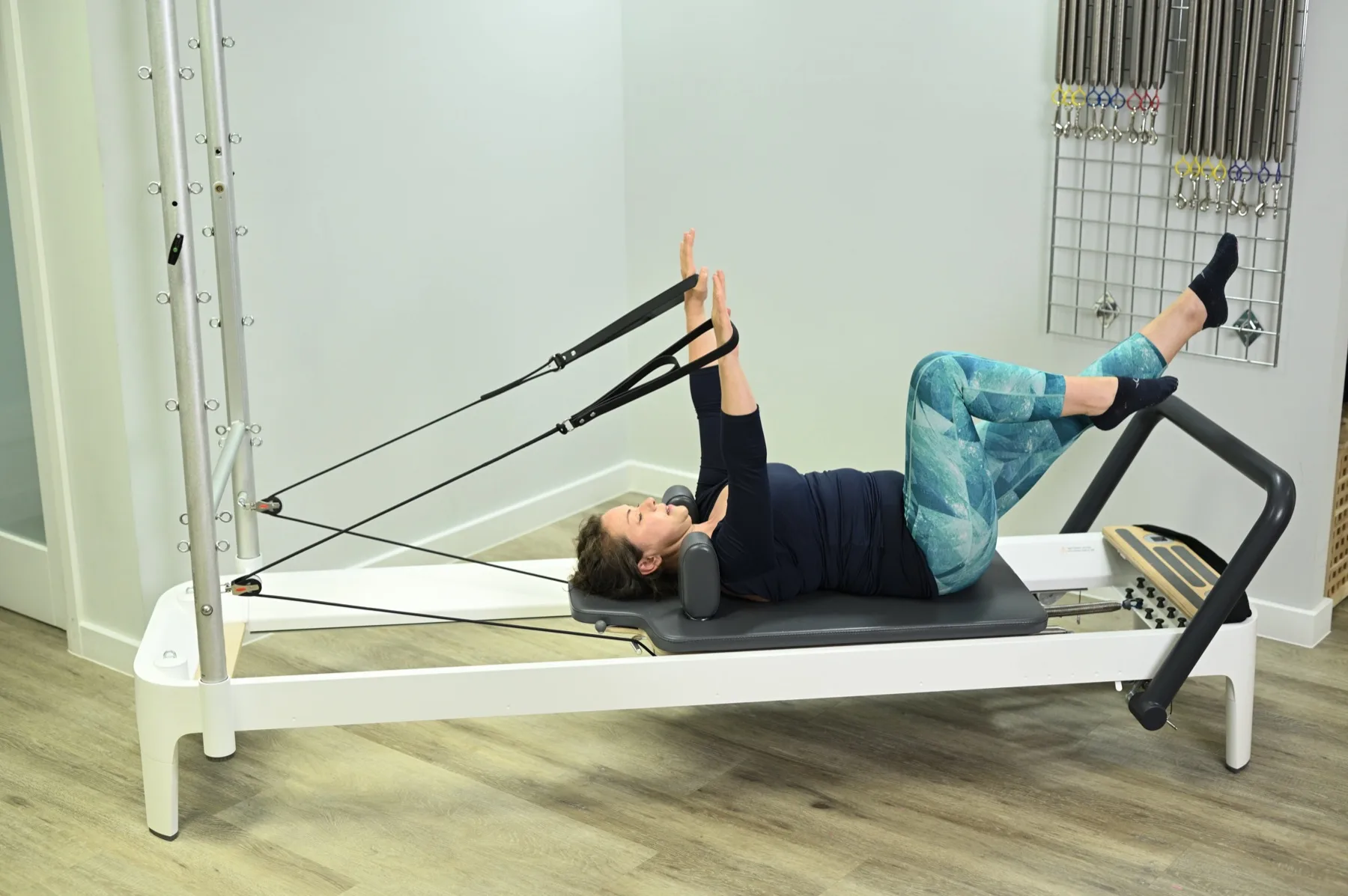
The design of the Pilates reformer means that it can actually be used as a very supportive piece of equipment. For example, the straps and footbar can be used to support the weight of the legs when you are lying down.
The resistance of the different coloured springs can vary from light to heavy, and when using one or two springs, the resistance can be made very gentle. Not only can the springs provide gentle resistance, but for certain exercises the springs can actually be set up to assist your movement.
Reformer Pilates can also be modified by adding small Pilates equipment which can further support you.
In the hands of a skilled Pilates instructor, everyone can benefit from reformer Pilates, as long as you have a programme that is matched to your skill and strength level. Working with an instructor with the appropriate level of expertise is appropriate here.
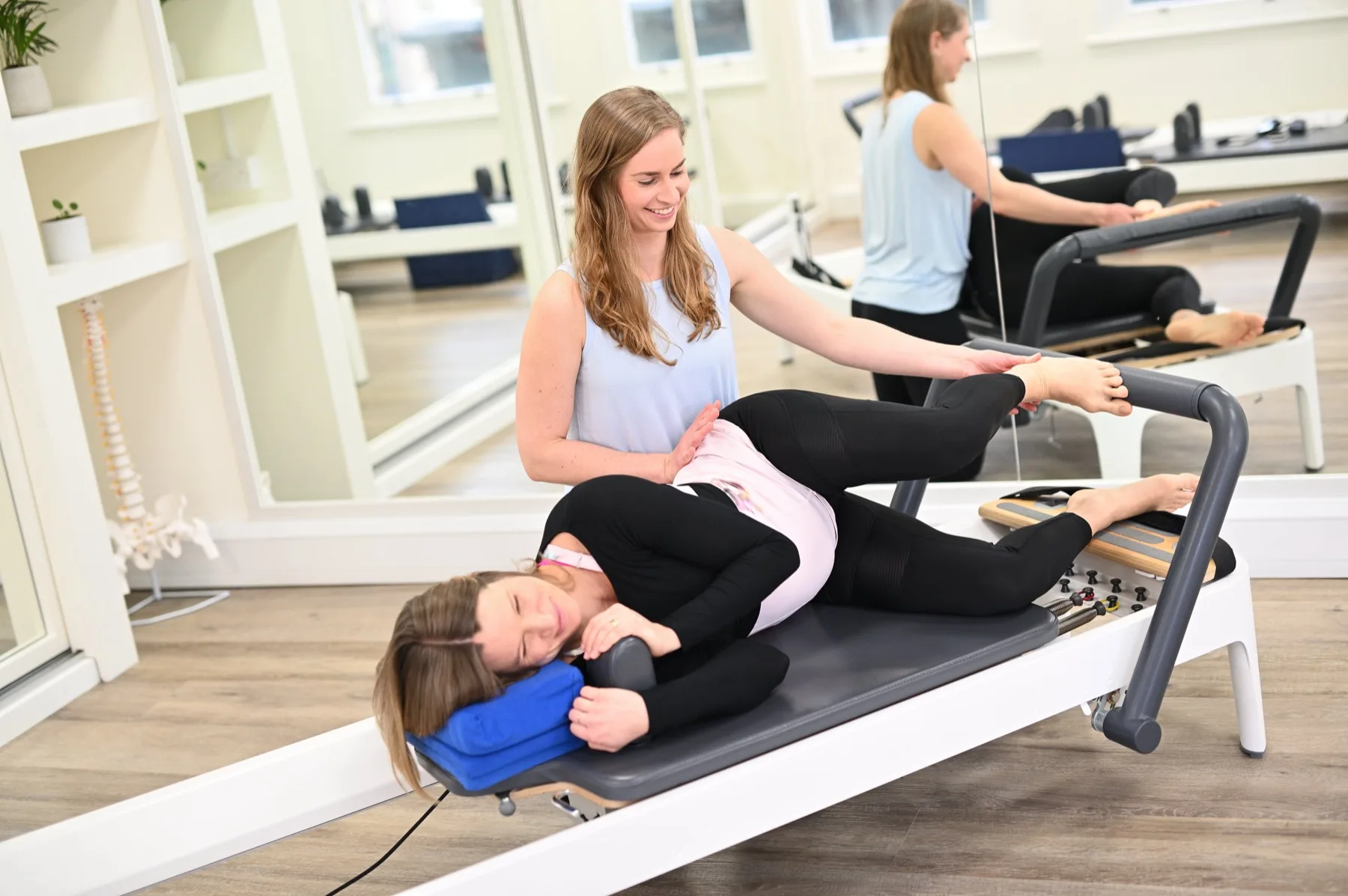
If you have a health condition or you are injured, working with an instructor who has training in rehabilitation is important, so that they can tailor your exercises to be safe and effective for you.
What to expect before and after your first reformer class?
At Complete Pilates, we specialise in one to one Pilates in our specialised studios. We also offer small group classes to those who undergo an assessment or have been working with us on a one to one basis.
When you book an appointment with Complete Pilates, our reception team will ask you to fill out a registration form, which will also cover your medical history. This is really important, as it helps us to know whether there is anything we need to modify in your sessions, based on any medical complaints.
When you come to the studio you will be greeted by your Pilates instructor and they will show you the different equipment. They may ask you questions about any pains or health conditions that you may have. This is so that we can make sure the sessions are safe and appropriate.
Your Pilates instructor will then ask you about your goals, so it is helpful to have thought a bit about this before you come. The more specific you can be about your goal, the easier it is to tailor a programme to suit you.
Your Pilates instructor may ask to look at the way that you stand and move, in order to identify your areas of flexibility and strength. If you are working with one of our physiotherapist instructors, they may assess your movement in more detail.

Your Pilates instructor will then introduce you to the fundamentals of Pilates exercises. This may be on the reformer, or the mat, or on another piece of equipment.
At Complete, we don’t only use the reformer but we also have other Pilates equipment, including the trapeze table and the wunda chair. We take care to teach you how to move on and off the equipment safely and how to handle moving parts safely too.
After your reformer Pilates session, your Pilates instructor may recommend some exercises for you to do at home based on their assessment of your movement. If you are new to reformer Pilates you may feel some muscle stiffness and soreness. This will usually settle after 2 – 3 days and is very normal!
If you are coming to the studio as part of our new client offer, you will be invited to book your second session soon after. This session typically involves less assessment, and we start to build on what you did in the previous session, with more movement. Here you will have the opportunity to let your instructor know how you felt after the previous session and to discuss any concerns you may have.
If you have booked a 3:1 assessment session, you will be invited to book into one of our small group classes.
FAQs
Is reformer Pilates harder than mat Pilates?
Not necessarily! They are just different. Mat based Pilates can be challenging using body weight alone. Reformer Pilates can add further challenge using the additional resistance from the springs or the instability of the carriage. However, reformer Pilates can be made easier and so it can be tailored to the needs of every individual.
Can you get fit doing just reformer Pilates?
Absolutely! Reformer Pilates builds strength, endurance, flexibility, and coordination. Many people find it offers a full-body workout sufficient to meet their fitness goals, especially when combined with cardio activities, such as running, swimming, cycling or HIIT.
Will I be sore after a reformer Pilates class?
Not everybody will feel sore after reformer Pilates but it would not be unusual! Particularly the first time you do a new type of exercise, or if you are working quite hard in muscle groups you don’t normally exercise.
You may expect mild to moderate soreness after your first few classes but this should resolve within 24-48 hours.
Conclusion
If you’ve been wondering ‘how hard is reformer pilates?’, you hopefully now have some more understanding about what makes reformer Pilates hard.
Reformer Pilates can definitely be hard, but in a good way — it’s a smart, controlled challenge that works your whole body.
The best way to know just whether reformer Pilates is hard, is to come and give it a try! We can tailor reformer Pilates specifically to you, no matter what your fitness level.
Feeling inspired?
If you want to experience the Complete difference and discover the benefits of one-to-one Pilates, book a session at one of our London studios or online today.
Our physiotherapist-led reformer Pilates studios in Chelsea, our Angel reformer Pilates studio and our reformer Pilates studio in the City, offer a highly tailored approach to your Pilates training, whether your goal is to manage a health condition, rehabilitate from an injury or to improve your strength and fitness.
Get in touch with us via email or contact us on 0203 764 5668 for further information.
Education is key:
These blogs are designed to give information to everyone, however, it is important to remember that everyone is different! If you have not seen one of our therapists and have any questions about injuries, what you have read or whether this may be useful to you, please just ask. We are more than happy to help anyone and point you in the right direction. Our biggest belief is that education is key. The more you understand about your injury, illness and movement, the more you are likely to improve.




